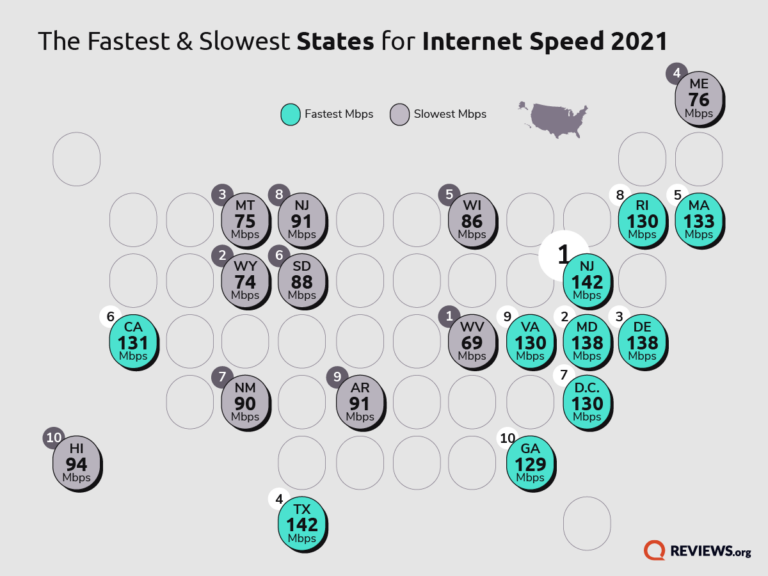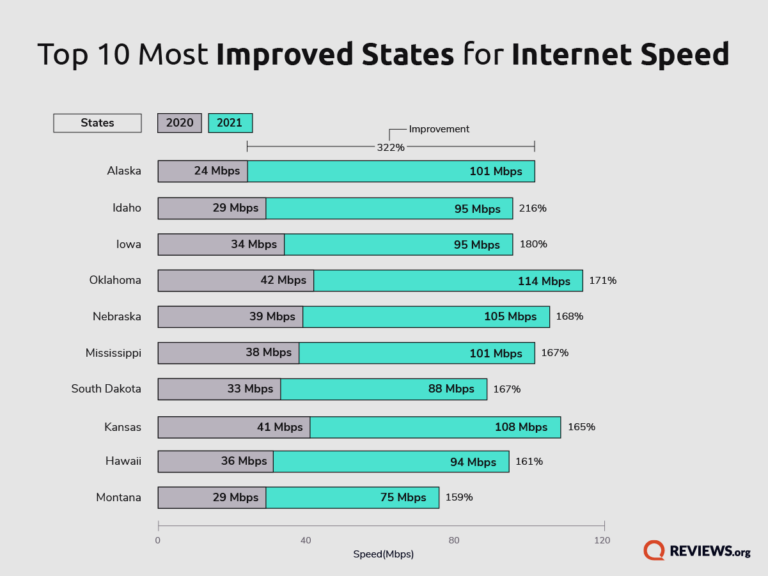Even so, the slowest average download speed in 2021 hit 69 Mbps, up from 24 Mbps in 2020. That’s a major improvement, especially considering a single person can likely enjoy almost every online activity with a speed of 69 Mbps. Curious to see how your state stacks up? Take a peek and see which states are home to the fastest—or slowest—internet speeds. **State population data retrieved from 2020 US Census reports. In 2020, Alaska was home to the slowest average download speed of 24 Mbps, but in 2021 it ranked 36th out of 51 states (and the District of Columbia) with an average download speed of 101 Mbps. And while West Virginia now brings up the back of the line with a 2021 average download speed of 69 Mbps, that’s still a 56% improvement over its 2020 average download speed of 44 Mbps. **State population data retrieved from 2020 US Census reports. We’re excited to see a similar trend among nine other states that embraced change and made some serious improvements to internet speeds in 2021. (Granted, this is likely influenced by residents purchasing internet plans with faster speeds too. But the fact that faster speeds are offered is still worth noting.) That’s why we also took a look at each state’s average upload speed and latency in 2021. No surprise, Hawaii had the highest latency. But what was surprising is seeing Mississippi top the charts for upload speeds in 2021. Some aspects of latency are out of our control, such as our location and the location of the server we’re trying to access. This is why you’ll see Alaska and Hawaii at the bottom of the list with the highest latency in 2021. Next, we averaged download speeds, upload speeds, and latency for each state. We also compared average download speed results for 2020 and 2021 to determine which states improved the most over the past two years. We also used 2020 US Census data to include each state’s population.

